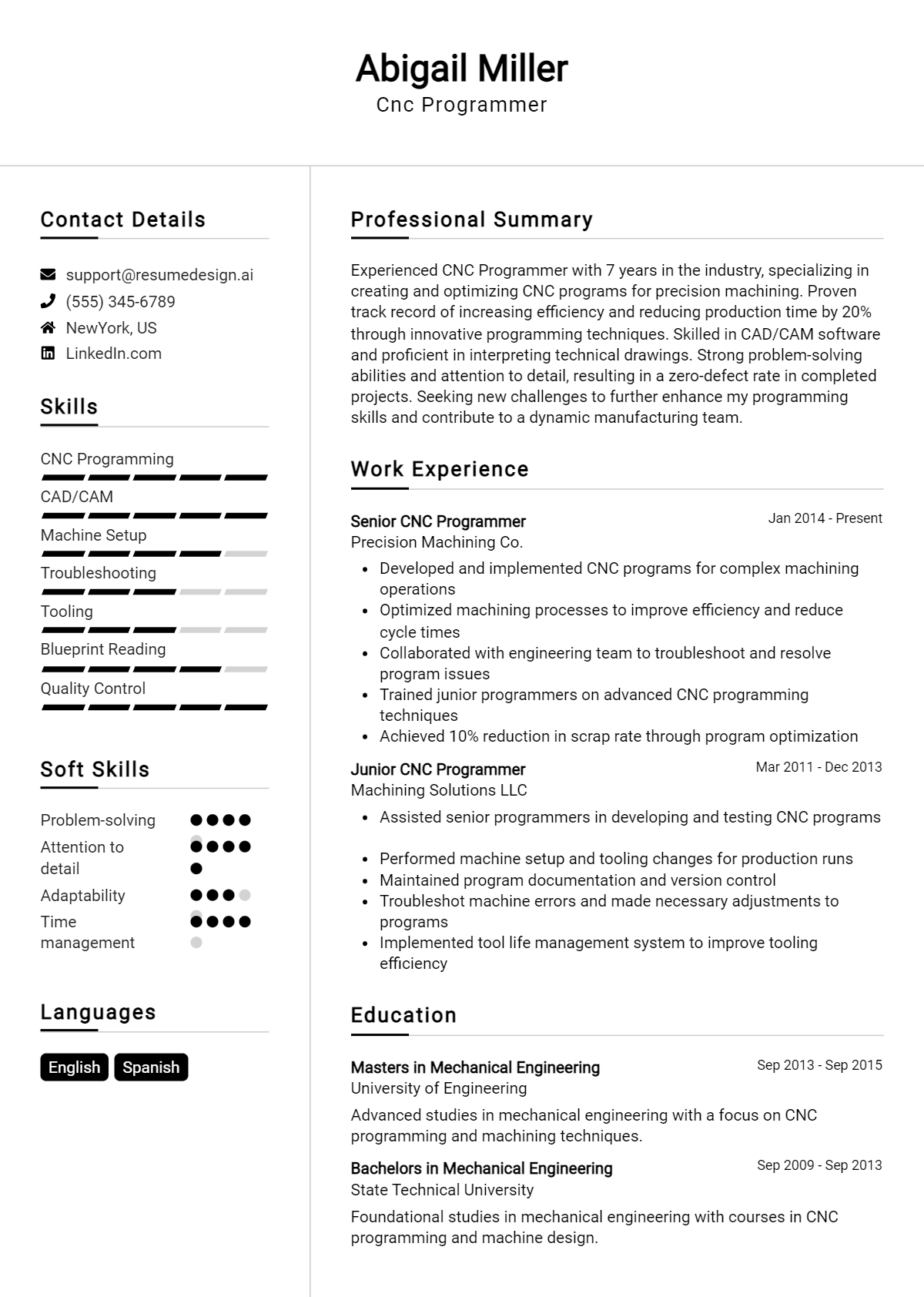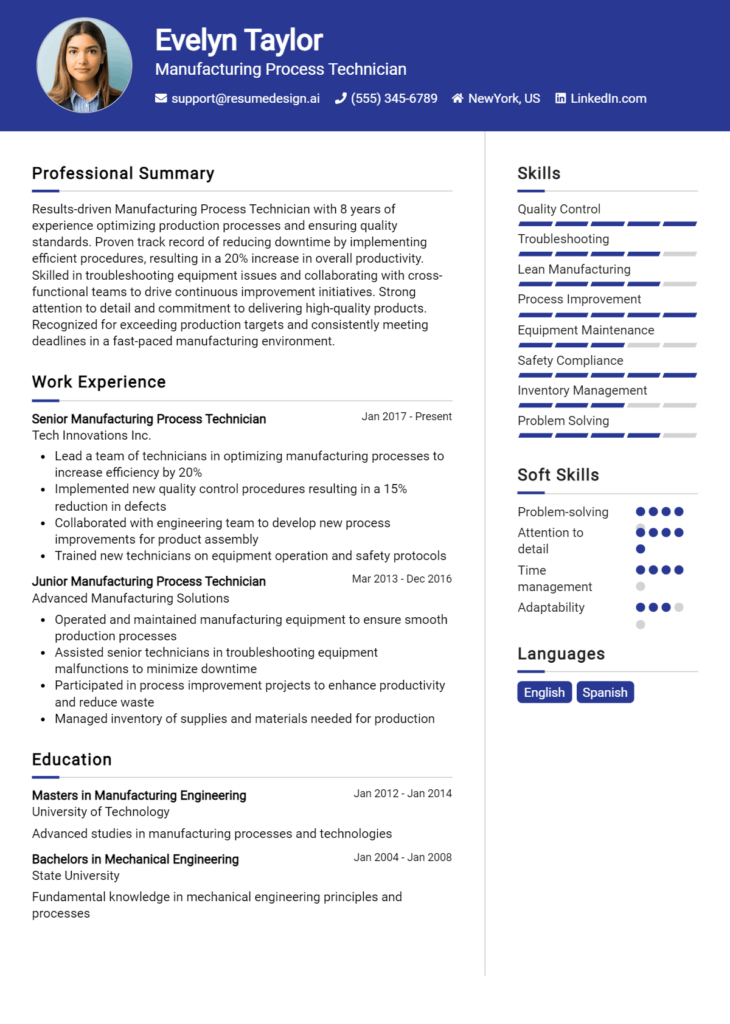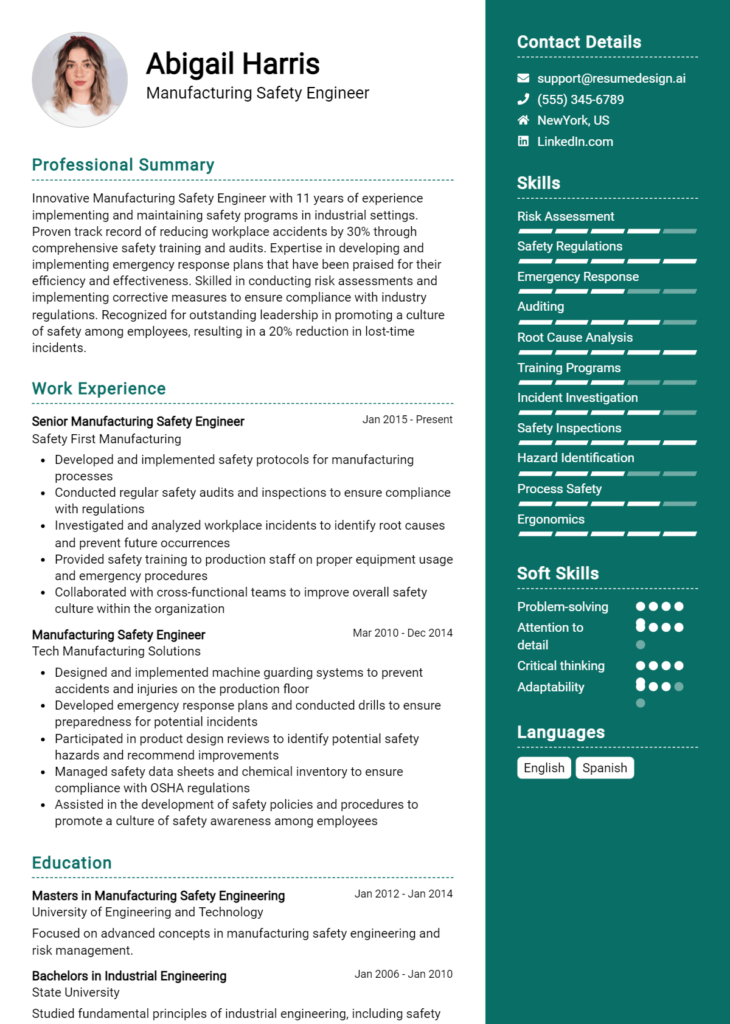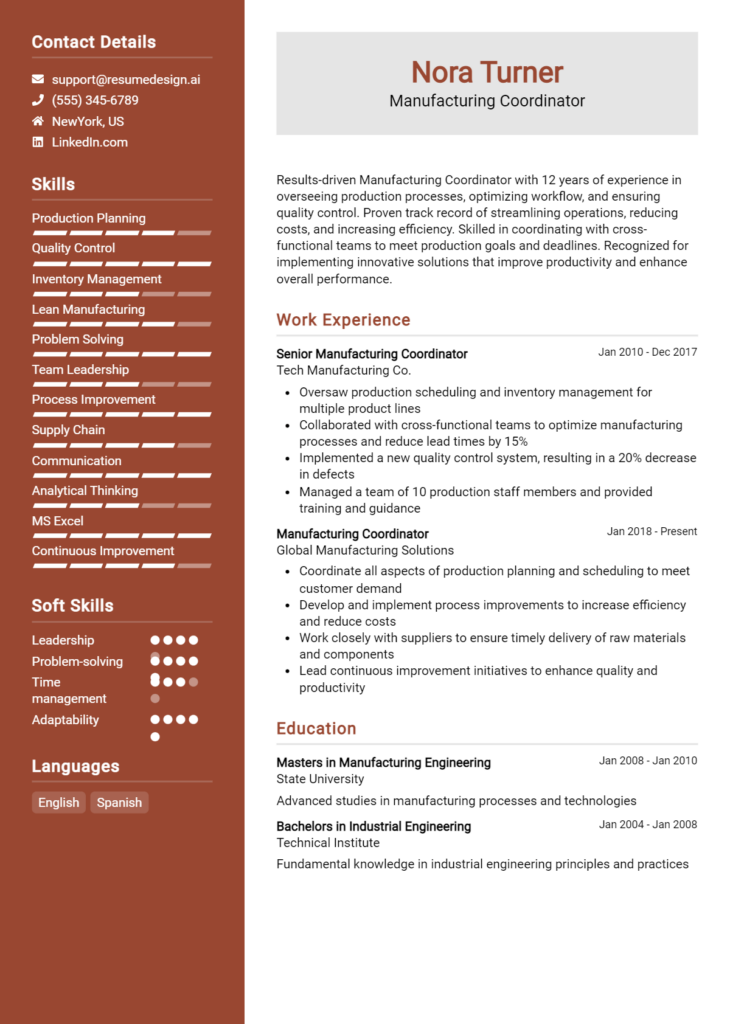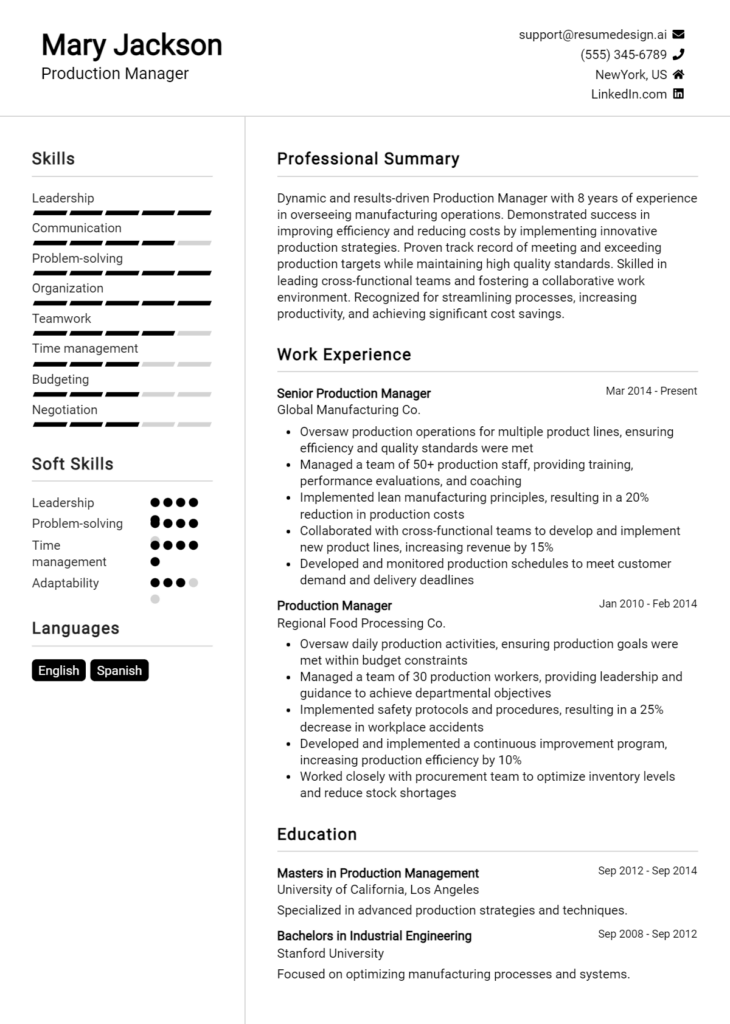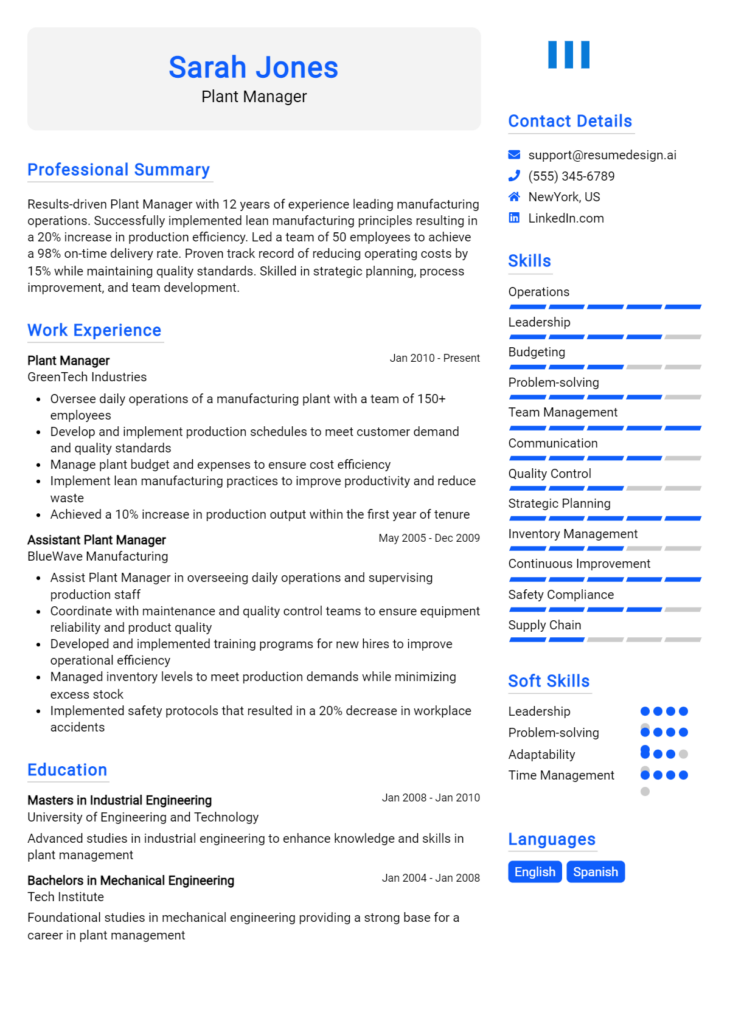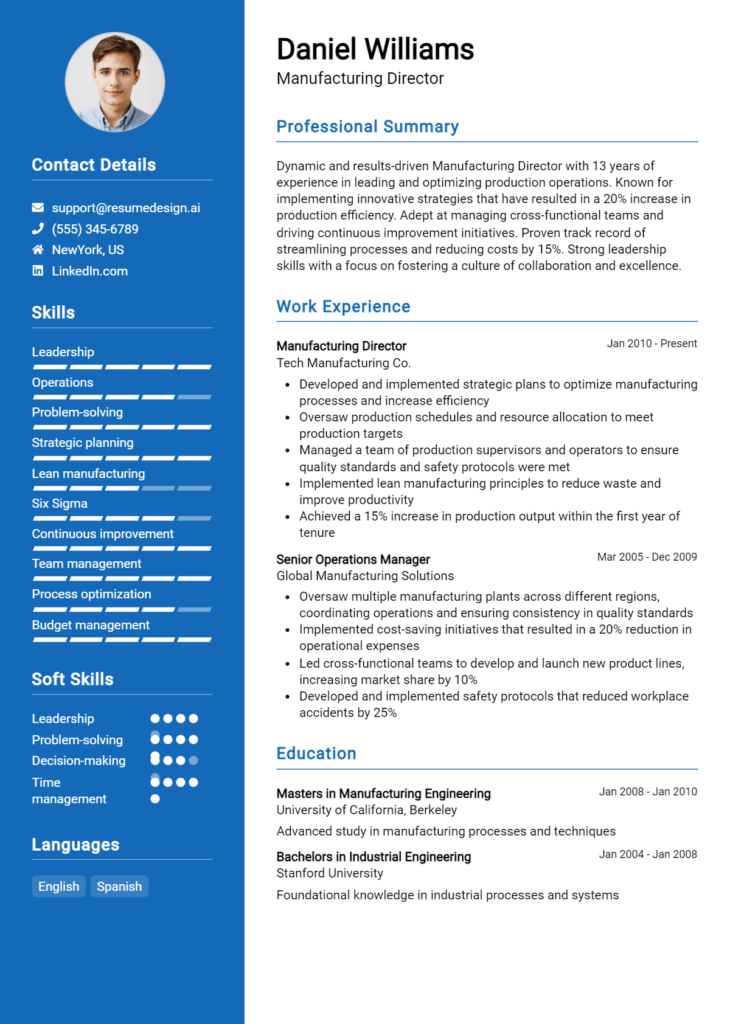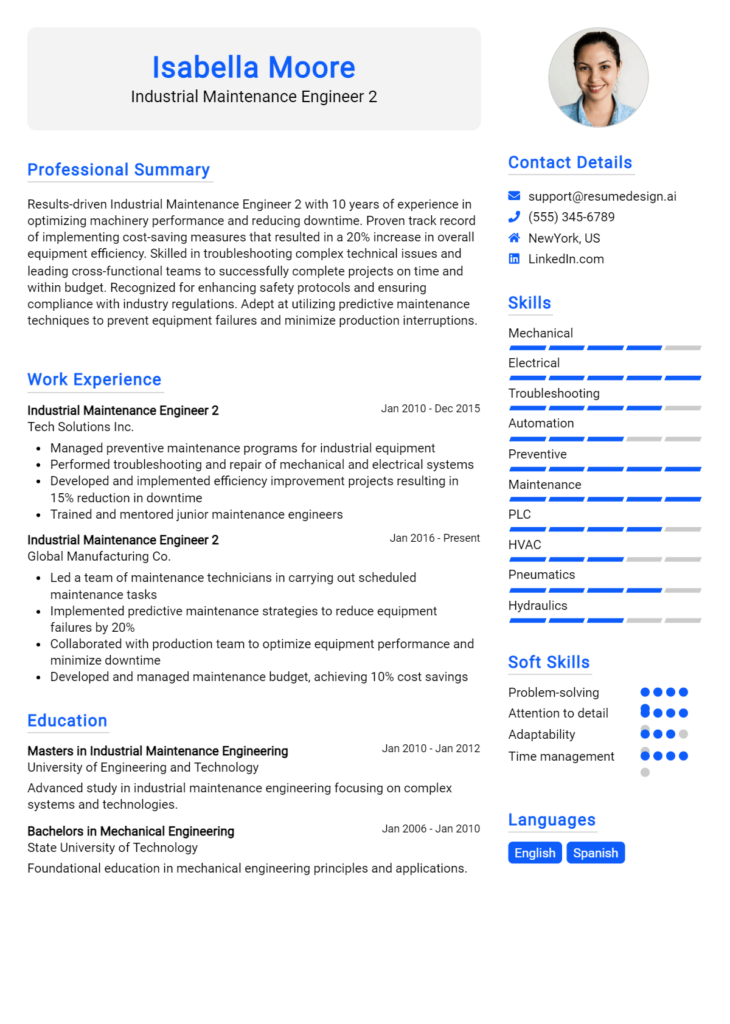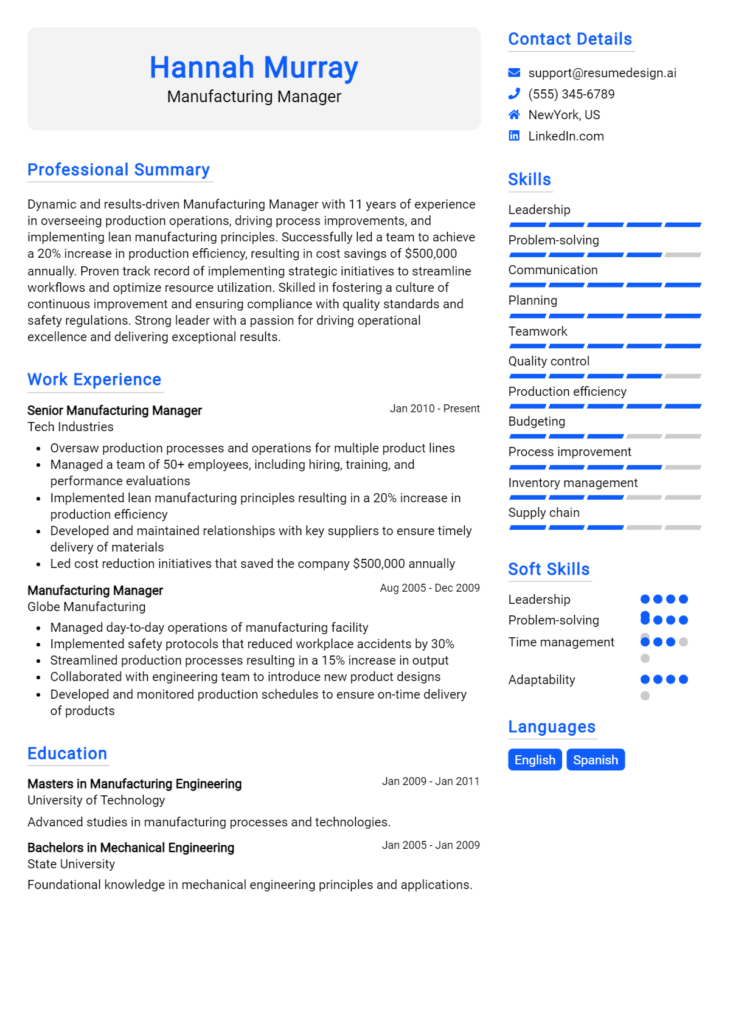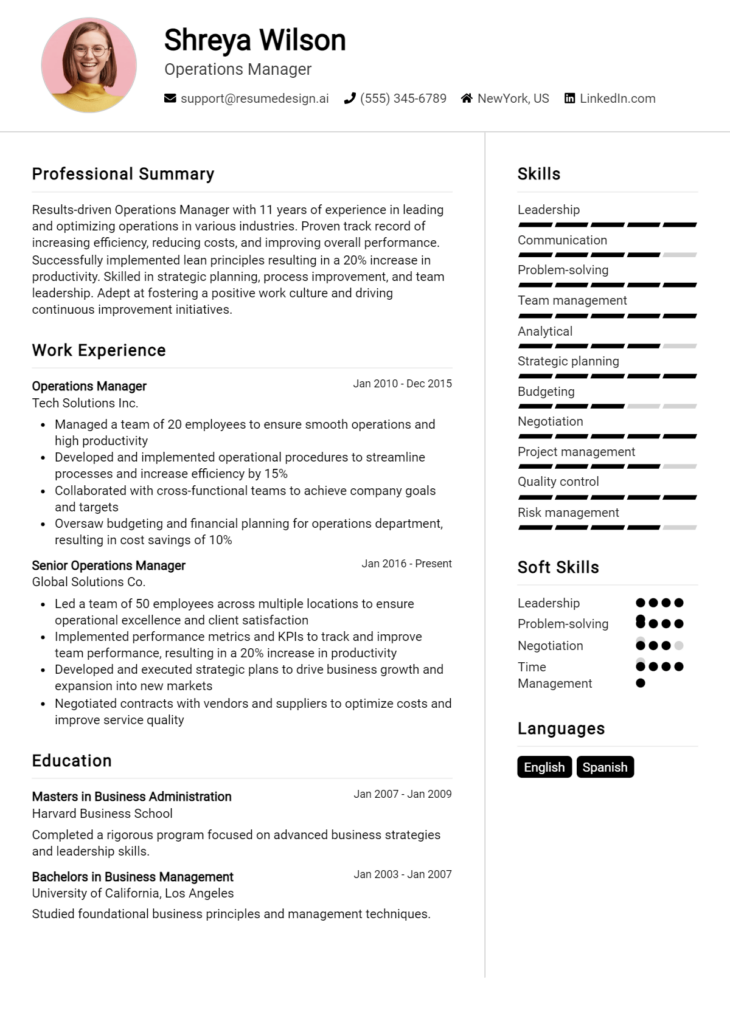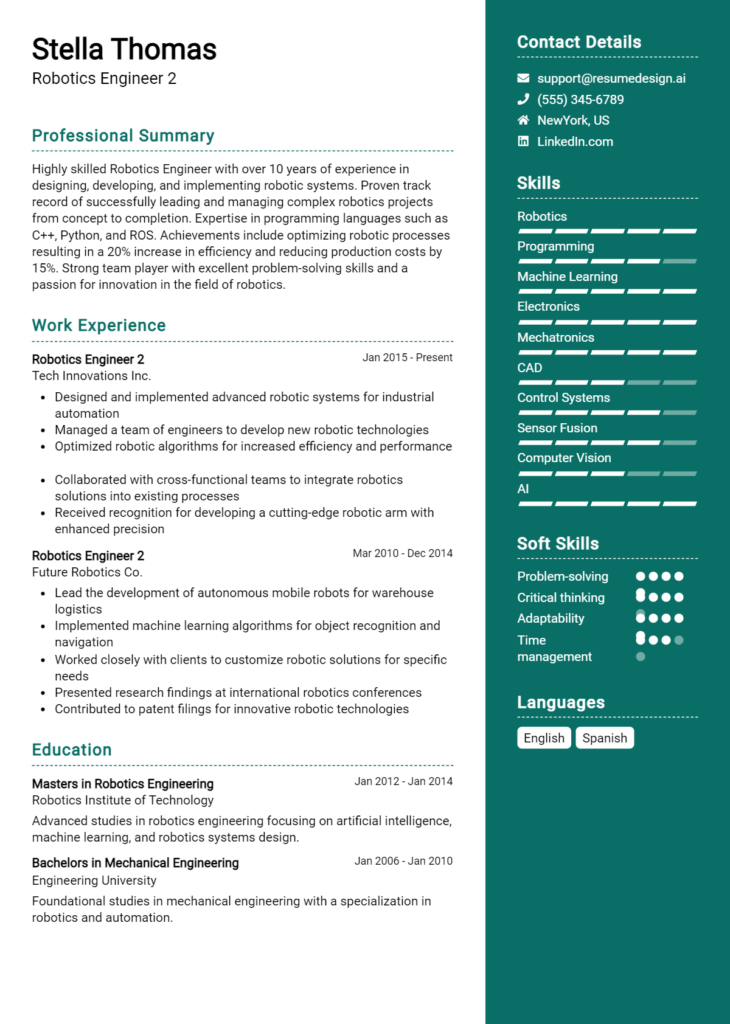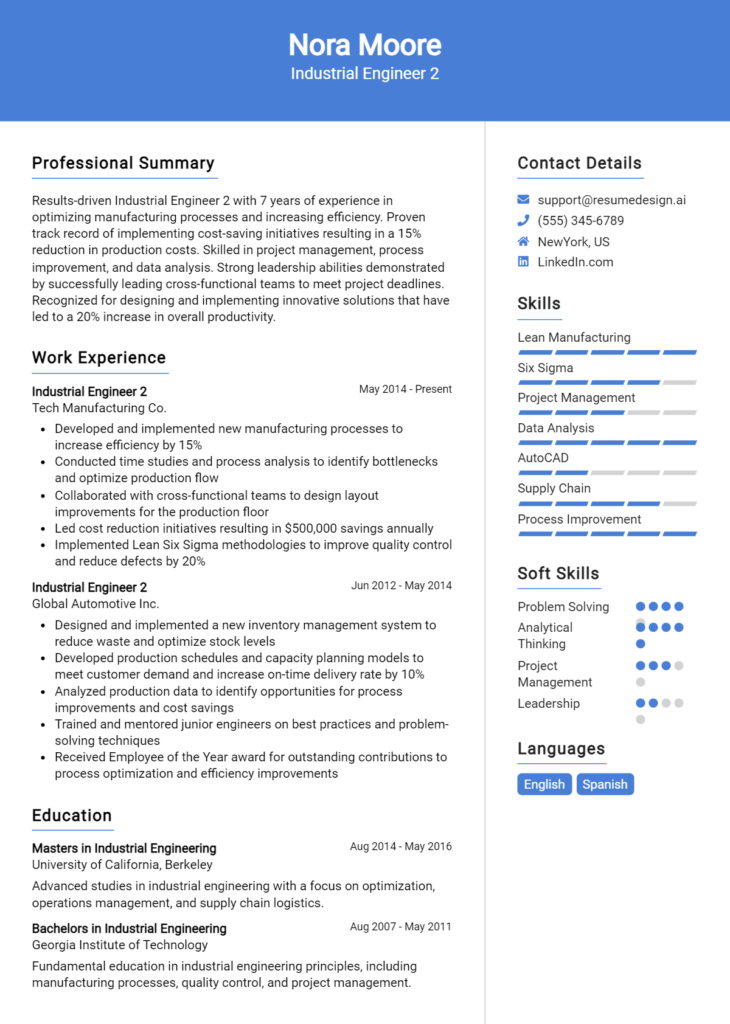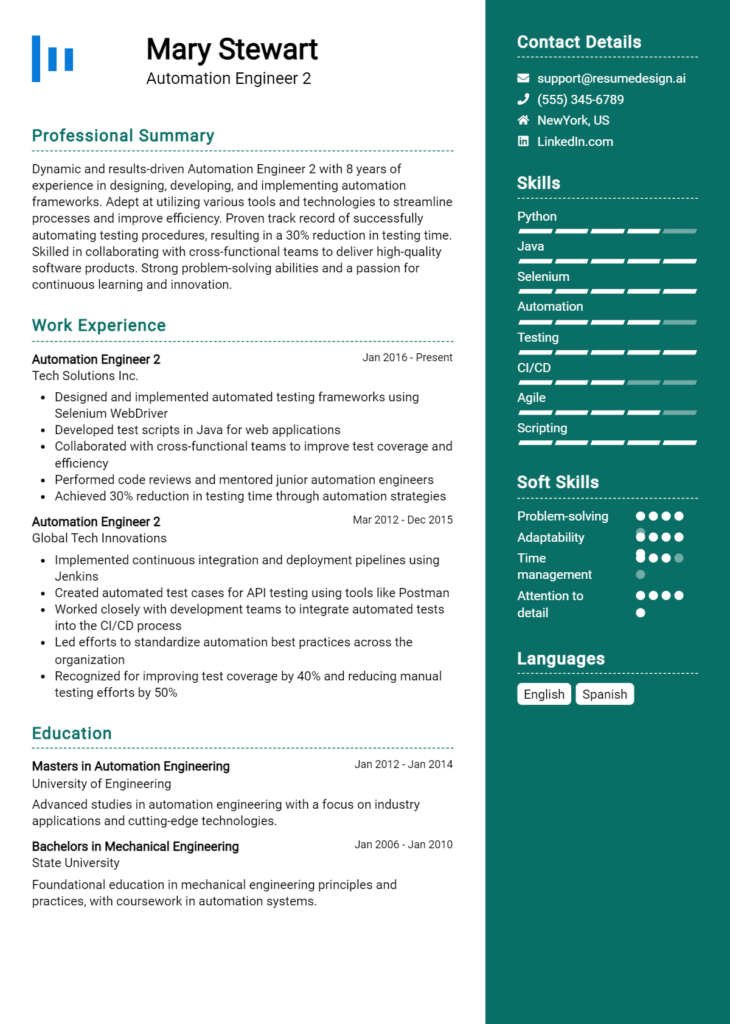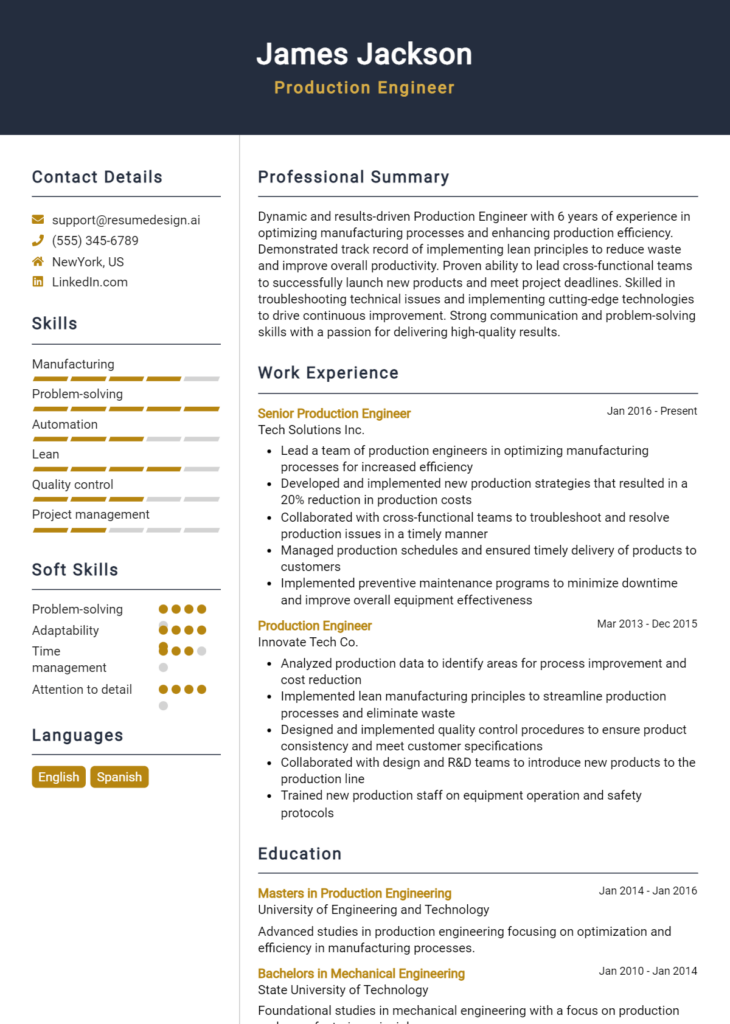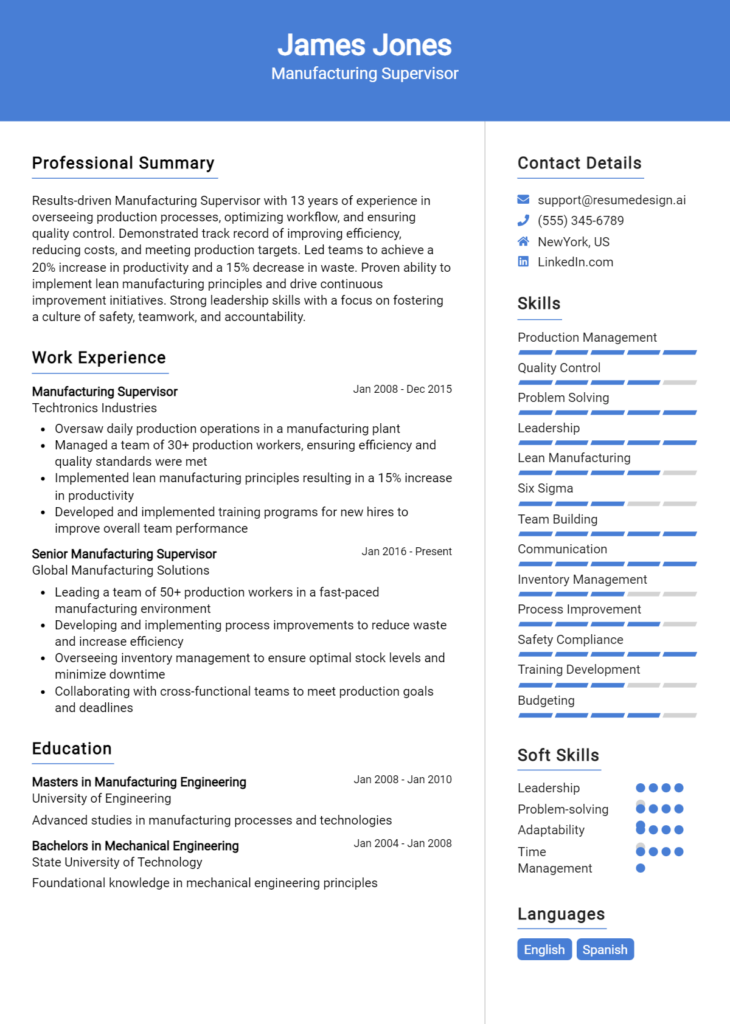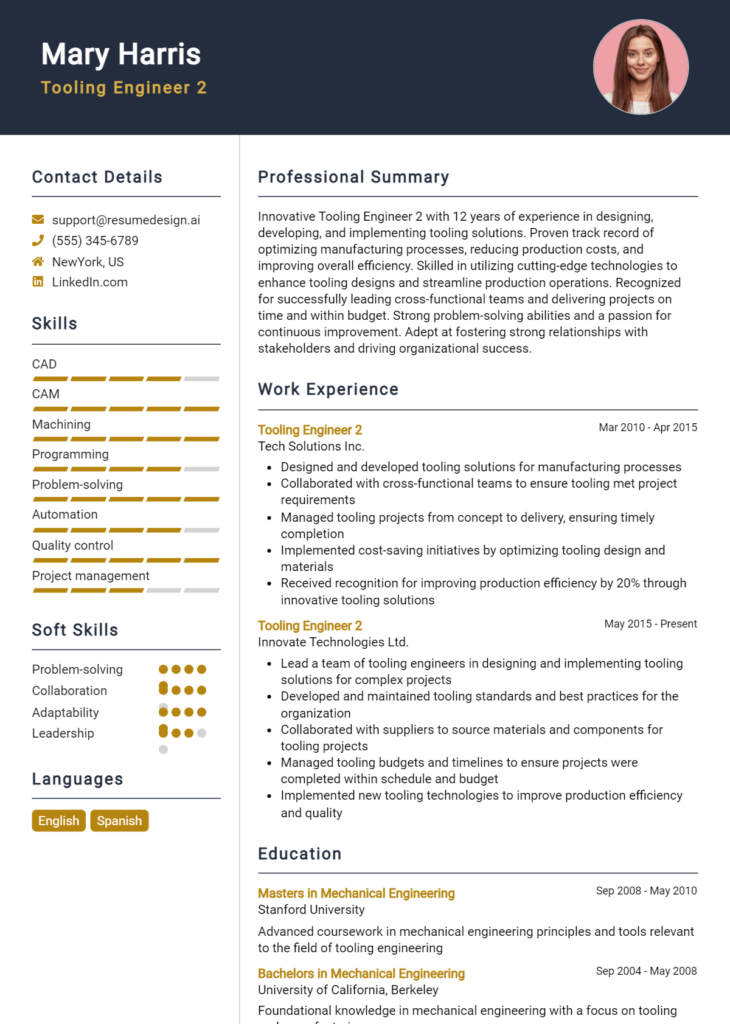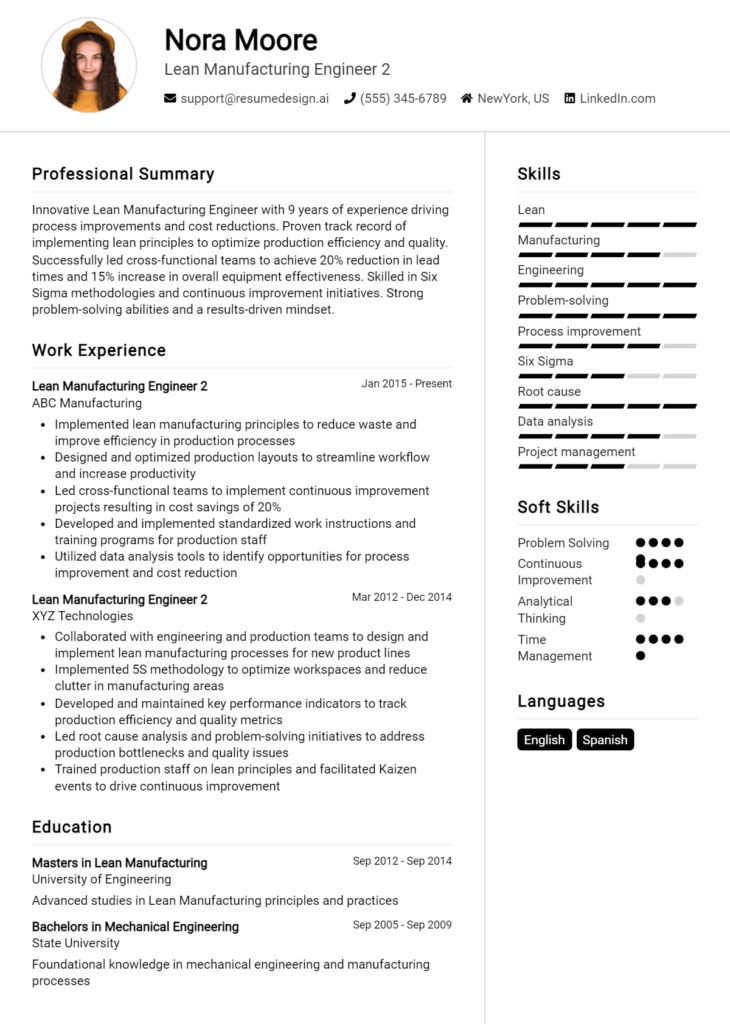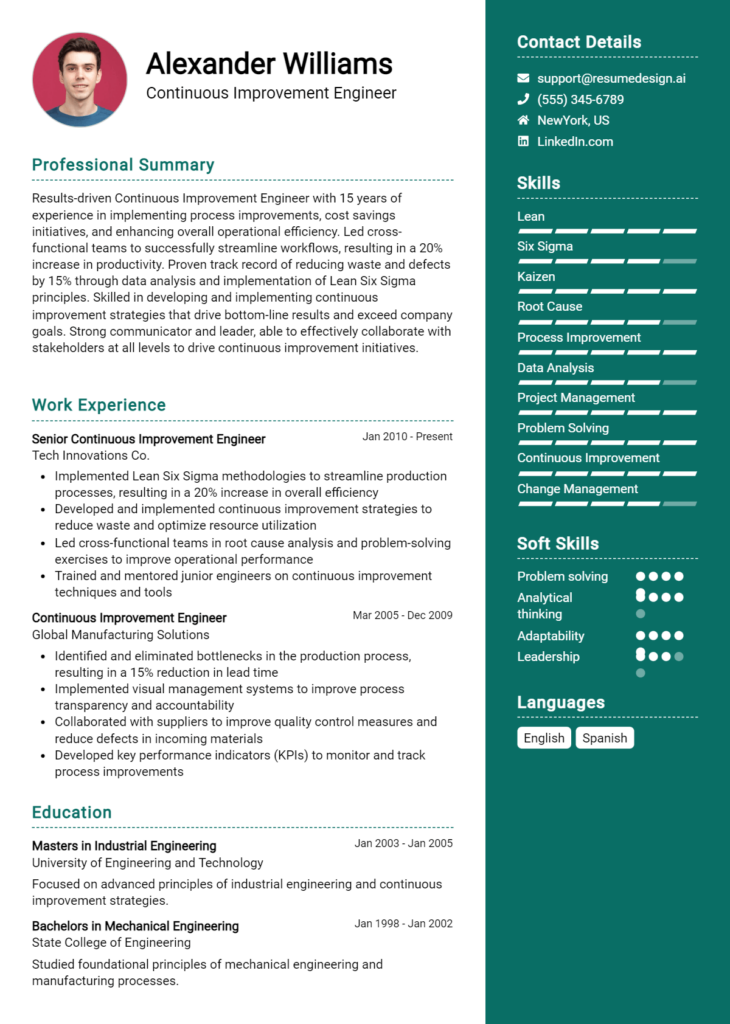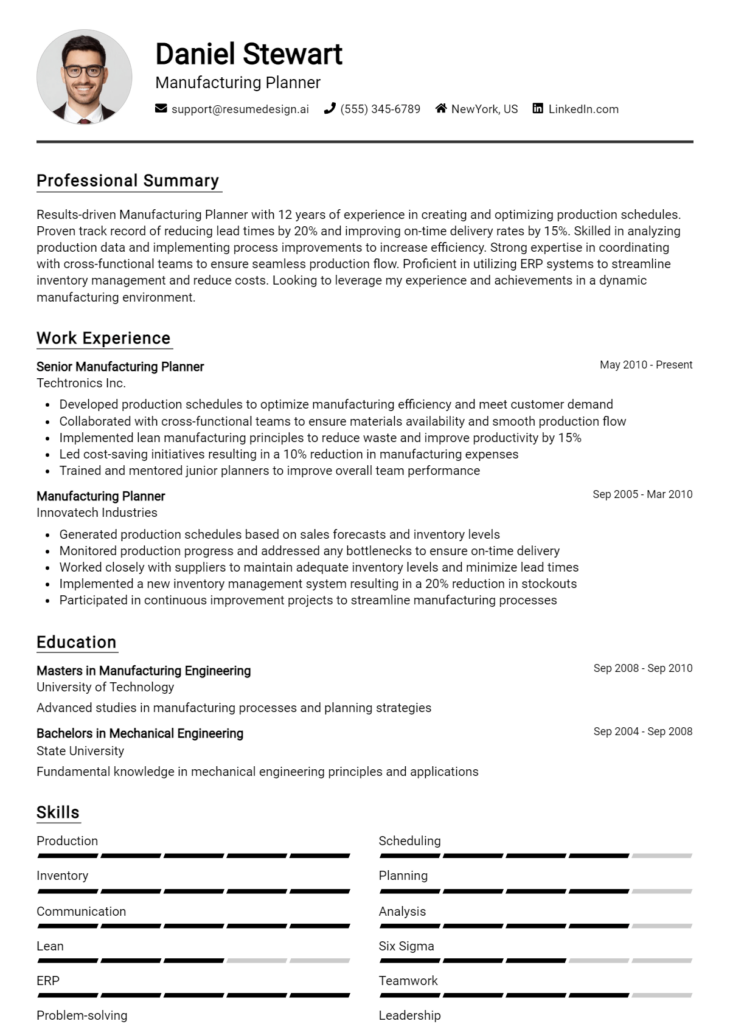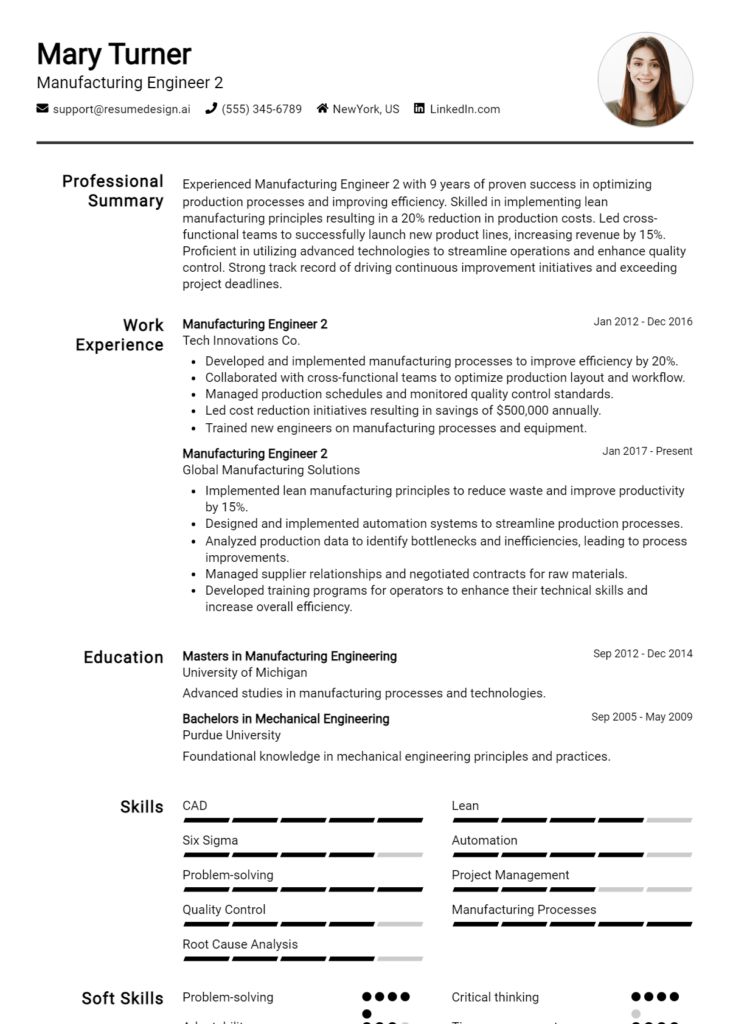CNC Programmer Core Responsibilities
A CNC Programmer is essential in translating engineering designs into precise machine operations. Key responsibilities include creating and optimizing CNC programs, conducting quality checks, and collaborating with engineering and production teams to ensure seamless workflow. Technical skills in programming languages, operational knowledge of machinery, and strong problem-solving abilities are crucial for success. These competencies directly contribute to organizational efficiency, and a well-structured resume highlighting these qualifications can effectively showcase a candidate's value to potential employers.
Common Responsibilities Listed on CNC Programmer Resume
- Develop and optimize CNC programs based on engineering specifications.
- Set up and operate CNC machines, ensuring precision and accuracy.
- Conduct regular quality control checks on machined parts.
- Collaborate with engineers and designers to refine manufacturing processes.
- Troubleshoot and resolve programming and machining issues.
- Maintain and update machine tooling and equipment.
- Document production processes and maintain accurate records.
- Train and mentor junior CNC operators and programmers.
- Implement safety protocols and ensure compliance with industry standards.
- Continuously seek process improvements to enhance efficiency.
- Assist in the selection of materials and machining techniques.
High-Level Resume Tips for CNC Programmer Professionals
A well-crafted resume is crucial for CNC Programmer professionals, as it often serves as the first impression a candidate makes on potential employers. In a competitive job market, your resume must effectively reflect not only your technical skills but also your achievements and contributions to previous roles. It is your opportunity to stand out and showcase how you can add value to an organization. This guide will provide practical and actionable resume tips specifically tailored for CNC Programmer professionals, helping you to present your qualifications in the best possible light.
Top Resume Tips for CNC Programmer Professionals
- Tailor your resume to the job description by incorporating relevant keywords and phrases that match the specific role.
- Highlight your experience with various CNC machines and programming languages, ensuring to mention any specialized expertise.
- Quantify your achievements by including metrics, such as improved production efficiency or reduced waste percentages.
- Include certifications and training related to CNC programming, such as Mastercam or G-code proficiency.
- Showcase your problem-solving skills by providing examples of challenges you've successfully addressed in previous positions.
- Demonstrate your understanding of quality control processes and how you've implemented them in your work.
- Incorporate soft skills, such as teamwork and communication, which are vital in collaborative manufacturing environments.
- Utilize a clean and professional format that enhances readability, making it easy for employers to quickly find key information.
- List your technical skills prominently, ensuring that they align with the requirements outlined in the job posting.
- Keep your resume concise and focused, ideally fitting it within one to two pages to maintain the reader's attention.
By implementing these tips, you can significantly enhance your chances of landing a job in the CNC Programmer field. A well-structured resume that clearly communicates your skills and achievements will not only capture the attention of hiring managers but also position you as a strong candidate in a competitive market.
Why Resume Headlines & Titles are Important for CNC Programmer
In the competitive field of CNC programming, a well-crafted resume headline or title is crucial for standing out among numerous applicants. A strong headline serves as the first point of contact with hiring managers, summarizing a candidate's key qualifications in a single impactful phrase. It not only grabs attention but also provides a snapshot of the candidate's expertise, making it easier for employers to quickly assess their fit for the role. Therefore, a concise, relevant, and role-specific headline can significantly enhance the effectiveness of a resume, ensuring that the candidate's skills and experience are highlighted right from the start.
Best Practices for Crafting Resume Headlines for CNC Programmer
- Keep it concise: Aim for a headline that is no longer than 10 words.
- Be specific: Use terms that directly relate to the CNC programming role.
- Highlight key skills: Focus on your most relevant skills or certifications.
- Use industry keywords: Incorporate terminology that aligns with the job description.
- Showcase experience level: Mention years of experience or a notable achievement.
- Tailor for the job: Customize your headline for each application to match the job requirements.
- Make it impactful: Use strong action verbs to convey confidence and competence.
- Avoid jargon: Ensure clarity by steering clear of overly technical language that might confuse the reader.
Example Resume Headlines for CNC Programmer
Strong Resume Headlines
"Expert CNC Programmer with 10+ Years in Aerospace Manufacturing"
“Precision CNC Machinist Specializing in Complex Component Design”
“Certified CNC Specialist with Proven Track Record in Efficiency Improvements”
Weak Resume Headlines
“CNC Programmer Looking for Work”
“Experienced Worker”
The strong headlines are effective because they clearly communicate the candidate's expertise, years of experience, and specific industry focus, thereby capturing the attention of hiring managers. They are tailored and impactful, making it easy for employers to see the candidate's value at a glance. In contrast, the weak headlines fail to impress because they lack specificity and do not convey any meaningful information about the candidate's qualifications. Generic phrases do not differentiate the applicant from others, making it less likely that they will stand out in a competitive job market.
Writing an Exceptional CNC Programmer Resume Summary
A resume summary is a crucial component of a CNC Programmer's resume, acting as the first impression for hiring managers. A well-crafted summary quickly captures attention by highlighting key skills, relevant experience, and notable accomplishments that align with the job role. In a competitive job market, a strong summary is concise, impactful, and tailored specifically to the job being applied for, ensuring that it resonates with employers and sets the candidate apart from the rest.
Best Practices for Writing a CNC Programmer Resume Summary
- Quantify Achievements: Use numbers and metrics to demonstrate your impact, such as reduced production times or increased accuracy rates.
- Focus on Skills: Highlight technical skills relevant to CNC programming, such as proficiency in specific software or machines.
- Tailor to the Job Description: Customize your summary to reflect the specific requirements and keywords present in the job listing.
- Keep It Concise: Limit your summary to 2-4 sentences, ensuring clarity and focus without overwhelming the reader.
- Showcase Relevant Experience: Emphasize experience that directly relates to CNC programming, such as years worked in the field or specialized projects.
- Use Action Verbs: Start sentences with strong action verbs to convey proactivity and effectiveness in your previous roles.
- Highlight Certifications: If applicable, mention any relevant certifications or training that enhance your qualifications.
- Reflect Professional Goals: Incorporate a brief statement about your career objectives that align with the prospective employer's goals.
Example CNC Programmer Resume Summaries
Strong Resume Summaries
Results-driven CNC Programmer with over 8 years of experience in optimizing machining processes, achieving a 30% reduction in cycle times through innovative programming techniques. Proficient in Mastercam and SolidWorks, with a proven track record of producing precise components for the aerospace industry.
Detail-oriented CNC Programmer skilled in operating multi-axis machines and implementing quality control measures, leading to a 15% decrease in defect rates. Successfully managed projects from conception to completion, ensuring on-time delivery and compliance with industry standards.
Experienced CNC Programmer with a background in automotive manufacturing, recognized for enhancing productivity by 20% through effective programming and machine setup. Adept in interpreting blueprints and technical drawings to create complex parts with high precision.
Weak Resume Summaries
CNC Programmer with some experience looking for a job in manufacturing. Good at working with machines and programming.
Hardworking individual seeking a CNC Programmer position. Familiar with CNC machines and programming, but no specific achievements mentioned.
The strong resume summaries are effective because they provide quantifiable results, specific skills, and are directly relevant to the CNC Programmer role, showcasing the candidate's contributions to previous employers. In contrast, the weak summaries lack detail and fail to highlight any tangible accomplishments or relevant experience, making them less compelling to hiring managers.
Work Experience Section for CNC Programmer Resume
The work experience section of a CNC Programmer resume is crucial in demonstrating a candidate's technical skills, leadership capabilities, and commitment to delivering high-quality products. This section not only highlights the applicant's hands-on experience with CNC machinery and programming languages but also provides insight into their ability to manage teams and collaborate effectively with others in the manufacturing process. By quantifying achievements and aligning work history with industry standards, candidates can present a compelling case to potential employers, showcasing how their expertise directly contributes to operational efficiencies and product excellence.
Best Practices for CNC Programmer Work Experience
- Include specific technical skills related to CNC programming, such as proficiency in CAD/CAM software.
- Quantify results by using metrics, such as percentage improvements in production efficiency or reductions in waste.
- Highlight leadership roles, showcasing your ability to manage teams and mentor junior programmers.
- Emphasize collaboration with cross-functional teams, including engineers and quality assurance personnel.
- Detail projects that demonstrate innovation, such as implementing new processes or technologies.
- Use action verbs to convey your contributions clearly and assertively.
- Align your experience with industry standards and best practices to showcase your familiarity with the field.
- Provide context for your achievements to help employers understand their significance in the production process.
Example Work Experiences for CNC Programmer
Strong Experiences
- Improved machining cycle times by 30% through the implementation of advanced CNC programming techniques, resulting in a $50,000 annual savings.
- Led a team of 5 programmers in the successful integration of a new CAD/CAM system, enhancing design accuracy and production efficiency.
- Collaborated with engineering teams to redesign tooling, achieving a 15% reduction in material costs while maintaining product quality.
- Trained and mentored 10 junior CNC operators, leading to a 40% decrease in programming errors and improved overall team performance.
Weak Experiences
- Worked on CNC machines.
- Participated in team meetings related to projects.
- Helped with programming tasks occasionally.
- Involved in general maintenance of equipment.
The examples of strong experiences are considered effective because they clearly quantify achievements, demonstrate leadership, and emphasize collaboration in ways that are relevant to potential employers. In contrast, the weak experiences lack specificity and measurable outcomes, making them less impactful. They fail to convey the candidate's skills and contributions meaningfully, resulting in a less compelling narrative on the resume.
Education and Certifications Section for CNC Programmer Resume
The education and certifications section of a CNC Programmer resume plays a crucial role in demonstrating a candidate's qualifications and commitment to the field. This section not only highlights the individual's academic background but also showcases industry-relevant certifications and ongoing professional development efforts. By including pertinent coursework, specialized training, and recognized credentials, candidates can significantly enhance their credibility and align themselves with the specific requirements of the job role, making them more attractive to potential employers.
Best Practices for CNC Programmer Education and Certifications
- Focus on relevant credentials that directly relate to CNC programming and machining.
- Include degrees in fields such as mechanical engineering, manufacturing technology, or computer-aided design.
- List industry-recognized certifications, such as those from the National Institute for Metalworking Skills (NIMS) or similar organizations.
- Provide detailed descriptions of coursework that pertain to CNC programming, CAD/CAM software, or machining principles.
- Highlight any specialized training or workshops attended that enhance programming skills or knowledge of specific machinery.
- Keep the information up-to-date and remove any outdated qualifications that no longer add value.
- Consider including relevant online courses or certifications from recognized platforms to demonstrate commitment to continuous learning.
- Use clear formatting to make this section easily readable and visually appealing to hiring managers.
Example Education and Certifications for CNC Programmer
Strong Examples
- Bachelor of Science in Manufacturing Engineering, XYZ University, 2021
- NIMS Certified CNC Machining Level I, 2022
- Certificate in Computer-Aided Design (CAD), ABC Technical Institute, 2020
- Advanced CNC Programming Workshop, DEF Manufacturing Solutions, 2023
Weak Examples
- High School Diploma, 2010
- Certificate in Basic Computer Skills, 2015
- Outdated CNC Programming Certification, 2010
- Online Course in 3D Printing Fundamentals, 2022 (not directly relevant to CNC programming)
The examples provided illustrate a clear distinction between strong and weak qualifications. Strong examples feature relevant degrees and certifications that align with CNC programming and demonstrate recent and ongoing professional development. Conversely, weak examples highlight outdated or irrelevant credentials that do not contribute to the candidate's suitability for the CNC Programmer role, ultimately detracting from their overall appeal to potential employers.
Top Skills & Keywords for CNC Programmer Resume
As a CNC Programmer, showcasing the right skills on your resume is crucial for standing out in a competitive job market. Employers are looking for candidates who not only have technical expertise but also possess the soft skills necessary to thrive in a collaborative work environment. A well-rounded skill set not only demonstrates your ability to operate CNC machines effectively but also highlights your problem-solving capabilities, communication skills, and adaptability. Including relevant skills can significantly enhance your chances of landing an interview, as they align your qualifications with the specific requirements of the job. For more insights on how to effectively present your skills, check out this skills guide.
Top Hard & Soft Skills for CNC Programmer
Soft Skills
- Attention to Detail
- Problem-Solving
- Team Collaboration
- Effective Communication
- Time Management
- Adaptability
- Critical Thinking
- Project Management
- Analytical Skills
- Dependability
Hard Skills
- CNC Programming Languages (e.g., G-code, M-code)
- CAD/CAM Software Proficiency
- Machine Setup and Calibration
- Blueprint Reading
- Quality Control Techniques
- Tool Selection and Maintenance
- Operation of CNC Machines (e.g., lathes, mills)
- Troubleshooting and Repairs
- Software Development for CNC Applications
- Knowledge of Material Properties
In addition to these skills, your work experience plays a vital role in showcasing your capability as a CNC Programmer. Highlighting relevant projects and responsibilities will further solidify your expertise and value to potential employers.
Stand Out with a Winning CNC Programmer Cover Letter
Dear [Hiring Manager's Name],
I am writing to express my interest in the CNC Programmer position at [Company Name] as advertised on [where you found the job posting]. With a strong background in programming and operating CNC machinery, combined with my attention to detail and problem-solving skills, I am confident in my ability to contribute effectively to your team. My experience includes programming complex parts, optimizing machining processes, and ensuring high-quality output while adhering to strict deadlines.
Throughout my career, I have gained extensive experience in various CAD/CAM software, including Mastercam and SolidWorks, which I utilize to create precise CNC programs. At my previous position with [Previous Company Name], I successfully reduced production time by 15% by implementing innovative programming techniques and streamlining workflow processes. My ability to analyze blueprints and technical drawings allows me to understand and translate design specifications into actionable machining plans that meet rigorous quality standards.
I am particularly drawn to [Company Name] because of your commitment to innovation and excellence in the manufacturing sector. I am excited about the opportunity to collaborate with your skilled team to enhance production efficiency and contribute to maintaining your reputation for high-quality products. I believe my technical skills and proactive approach make me a perfect fit for your organization.
Thank you for considering my application. I look forward to the opportunity to discuss how my expertise in CNC programming can benefit [Company Name]. I am eager to bring my knowledge and skills to your team and contribute to your ongoing success.
Sincerely,
[Your Name]
[Your Phone Number]
[Your Email Address]
Common Mistakes to Avoid in a CNC Programmer Resume
When crafting a resume for a CNC Programmer position, it's crucial to present your skills and experiences effectively to stand out in a competitive job market. However, many candidates make common mistakes that can detract from their qualifications and reduce their chances of landing an interview. Below are some pitfalls to avoid when writing your CNC Programmer resume:
Neglecting Specific Skills: Failing to highlight specific CNC programming languages and software (like G-code or CAD/CAM software) can lead to missed opportunities since employers look for these technical competencies.
Using Generic Language: Phrases like "hard worker" or "team player" are vague and overused. Instead, provide concrete examples of accomplishments or contributions that demonstrate your skills and work ethic.
Omitting Relevant Experience: Some candidates list experiences but leave out relevant details. Ensure you include specific projects or roles that showcase your CNC programming expertise, even if they were completed during internships or freelance work.
Ignoring Quantifiable Achievements: Resumes should include measurable achievements. For example, stating you "increased production efficiency by 20%" provides concrete evidence of your impact instead of simply listing responsibilities.
Poor Formatting: A cluttered or unorganized resume can be hard to read and may lead to key information being overlooked. Use clear headings, bullet points, and consistent formatting to enhance readability.
Failing to Tailor the Resume: Sending out a generic resume without tailoring it to the specific job description can be detrimental. Customize your resume for each application by incorporating relevant keywords and aligning your experience with the job requirements.
Not Including Certifications: If you have relevant certifications (like CNC programming certifications or safety training), make sure to include them. This can set you apart from other candidates who may not have formalized training.
Leaving Out Soft Skills: While technical skills are critical, soft skills such as problem-solving, attention to detail, and communication are also important for a CNC Programmer. Incorporate these attributes into your resume to present a well-rounded profile.
Conclusion
As we wrap up our discussion on the vital role of a CNC Programmer, it’s essential to remember the key skills and qualifications that employers are seeking. Proficiency in CAD/CAM software, a solid understanding of machining processes, and the ability to read and interpret technical drawings are paramount. Additionally, attention to detail, problem-solving skills, and a commitment to safety standards can significantly enhance your candidacy.
Now that you’re equipped with this knowledge, it’s time to take action on your job application materials. A polished resume is your first step toward landing that CNC Programmer position. Review your current resume to ensure it highlights your relevant skills and experiences effectively.
To assist you in this process, consider utilizing various tools available online. Explore resume templates to find a design that suits your style, or use the resume builder for a user-friendly way to create a professional document. Additionally, reviewing resume examples can provide inspiration and insights into what works best in the industry. Don’t forget to craft a compelling cover letter using our cover letter templates, which can help you stand out even further.
Take the time now to refine your resume and cover letter. With the right tools at your disposal, you are well on your way to making a great impression in your job search as a CNC Programmer!

